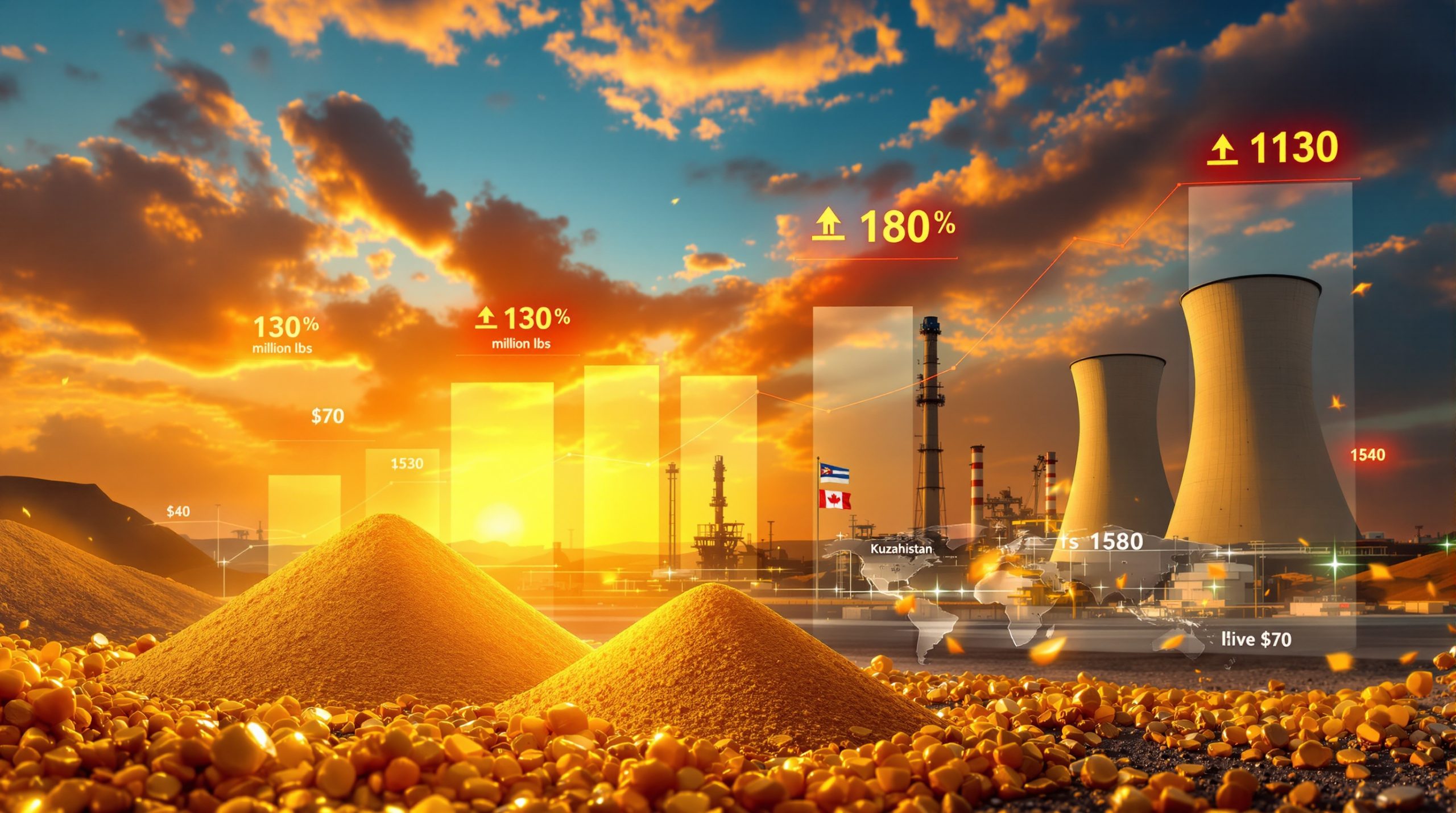What Drives Guinea's Bauxite Export Surge in 2025?
Guinea has cemented its position as a critical player in global aluminium supply chains, with Guinea bauxite exports jump reaching extraordinary levels despite facing significant operational and regulatory challenges. The West African nation's role as the world's second-largest bauxite producer has become increasingly vital to international markets, particularly as Chinese industrial demand maintains its upward trajectory. Furthermore, this surge demonstrates the resilience of Guinea's mining industry evolution and its strategic importance in the global mining landscape.
Record-Breaking Performance Amid Adversity
The third quarter of 2025 delivered exceptional results for Guinea's mining sector, with bauxite shipments surging to 39.41 million metric tonnes—representing a remarkable 23% increase compared to the 32 million tonnes shipped during the same period in 2024. This achievement becomes particularly impressive when considering the seasonal challenges that typically constrain operations during Guinea's wet season.
According to data from Guinea's Ministry of Mines and Geology, this surge occurred despite heavy rainfall disrupting mine accessibility and slowing port operations throughout the quarter. The robust performance demonstrates the resilience of Guinea's mining infrastructure and the strategic importance of bauxite exports to the nation's economy.
Seasonal Volatility and Weather Impact
Monthly shipment patterns reveal the predictable yet significant impact of Guinea's tropical climate on mining operations. Average monthly exports dropped nearly 19% from the first half of 2025 to 13.14 million tonnes in Q3, highlighting how seasonal weather patterns create natural bottlenecks in global bauxite supply chains.
The wet season consistently affects:
- Mine site accessibility due to flooding and poor road conditions
- Port loading operations and vessel scheduling
- Transportation logistics between mines and export facilities
- Equipment maintenance and operational efficiency
This seasonal volatility underscores the challenges facing international aluminium producers who depend on consistent bauxite supplies from Guinea throughout the year.
How Do Regulatory Pressures Shape Guinea's Mining Landscape?
Guinea's military-led government has fundamentally transformed the operating environment for international mining companies through increasingly stringent regulatory policies. These measures represent a strategic effort to maximise domestic value creation from the country's abundant mineral wealth while reducing dependence on raw commodity exports.
Licence Revocations and Operational Uncertainty
The government's regulatory crackdown has created substantial operational uncertainty throughout the mining sector. Companies face heightened scrutiny over their compliance with local processing requirements and environmental standards. This policy shift aims to force Guinea up the global value chain by transforming raw bauxite into higher-value processed materials before export.
Mining companies operating in Guinea must now navigate:
- Enhanced due diligence processes for licence renewals
- Stricter environmental compliance requirements
- Increased local content obligations
- Mandatory investment commitments in domestic processing facilities
Domestic Processing Requirements
Despite mounting government pressure to establish alumina refineries, Guinea exported only 78,000 tonnes of alumina in Q3 2025, according to official ministry data. This minimal volume starkly illustrates the significant gap between policy objectives and current industrial capacity. However, the mineral beneficiation insights from similar projects worldwide offer valuable lessons for Guinea's development strategy.
The establishment of domestic alumina processing facilities requires:
- Substantial capital investment in refinery infrastructure
- Advanced technical expertise and skilled workforce development
- Reliable power generation and water supply systems
- Long-term financing arrangements with international partners
Which Countries Control Guinea's Bauxite Trade?
The global distribution of Guinea's bauxite exports reveals a highly concentrated market structure dominated by Chinese companies and their strategic partnerships. This concentration has significant implications for global aluminium pricing and supply chain security.
Chinese Market Dominance
Chinese firms controlled 54.6% of Guinea's Q3 2025 bauxite exports, totalling 21.54 million tonnes out of the quarter's total 39.41 million tonnes. This dominance is led by several key players:
| Company | Q3 2025 Exports | Market Share |
|---|---|---|
| SMB-Winning | 17.51 million tonnes | 44.4% |
| CHALCO | Significant volume* | Undisclosed |
| CDM-CHINE | Significant volume* | Undisclosed |
| Total Chinese Control | 21.54 million tonnes | 54.6% |
*Specific volumes not disclosed in official data
SMB-Winning, a consortium between Winning Shipping and Société Minière de Boké, emerged as the single largest exporter, demonstrating the success of Chinese-Guinean joint venture partnerships in the bauxite sector.
Strategic Supply Chain Integration
Chinese companies have systematically integrated Guinea's bauxite production into their domestic aluminium manufacturing ecosystem. This vertical integration provides Beijing with substantial influence over global aluminium markets, particularly as Guinea supplies approximately one-third of China's total bauxite imports.
The strategic implications include:
- Enhanced supply chain security for Chinese aluminium producers
- Reduced exposure to global price volatility through direct partnerships
- Increased leverage in international aluminium pricing negotiations
- Strengthened bilateral economic relationships between China and Guinea
What Role Does Infrastructure Play in Export Growth?
Guinea's infrastructure development has been crucial to supporting the dramatic growth in bauxite exports. Strategic investments in port facilities, transportation networks, and logistics systems have eliminated traditional bottlenecks that previously constrained export capacity.
Multi-Port Strategy Success
The diversification of export infrastructure across multiple port facilities has proven essential to maintaining consistent export flows despite weather-related disruptions at individual locations. According to analysis from maritime experts, port diversification underpins Guinea's remarkable export performance. This multi-port approach provides operational flexibility and reduces dependence on single-point failures in the supply chain.
Key infrastructure advantages include:
- Distributed risk across multiple export facilities
- Enhanced vessel scheduling flexibility during peak export periods
- Reduced congestion and waiting times for international shipping
- Improved maintenance scheduling without disrupting total export capacity
Transportation Network Development
The expansion of rail and road connections between mining sites and port facilities has significantly improved operational efficiency. These infrastructure investments support higher throughput volumes while reducing transportation costs and environmental impact compared to traditional truck-based logistics.
Modern transportation infrastructure features:
- Dedicated rail lines connecting major mining operations to ports
- All-weather road access to mining sites
- Automated loading and unloading systems at key facilities
- Digital tracking and inventory management systems
How Does Guinea's Production Compare Globally?
Guinea's position in the global bauxite market has strengthened considerably over recent years, establishing the country as an indispensable supplier to international aluminium producers worldwide.
Global Market Position
As the world's second-largest bauxite producer, Guinea plays a crucial role in global aluminium supply chains. The country's strategic importance extends beyond current production volumes to include its substantial reserve base and potential for future expansion. Furthermore, the implications of such projects are evident when considering bauxite project benefits across different regions.
Guinea's competitive advantages include:
- High-quality bauxite deposits with favourable aluminium content
- Relatively low production costs compared to other major producers
- Proximity to major shipping routes serving international markets
- Government support for mining sector development and expansion
Production Trajectory Analysis
Independent mineral economist Bernabe Sanchez projects Guinea's 2025 annual bauxite production will reach approximately 180 million tonnes, representing more than 20% growth above 2024's record performance. This growth trajectory positions Guinea as an increasingly dominant force in global bauxite markets.
The production outlook reflects:
- Continued expansion of existing mining operations
- Development of new mining concessions and projects
- Infrastructure improvements supporting higher throughput
- Strong international demand for Guinea's high-quality bauxite
What Economic Factors Drive Continued Demand?
Sustained international demand for Guinea's bauxite reflects broader economic trends in key consuming markets, particularly the resilience of China's manufacturing sector despite periodic fluctuations in other industrial segments. Consequently, investors seeking to understand these dynamics should consider comprehensive investing guide strategies for the mineral sector.
Chinese Manufacturing Resilience
China's primary aluminium production demonstrated remarkable resilience with 2.6% year-on-year growth in Q1 2025, according to official Chinese data. This growth occurred despite periodic weaknesses in steel production, highlighting the distinct demand drivers supporting the aluminium sector. Moreover, the Guinea bauxite exports jump directly correlates with this sustained demand from Chinese manufacturers.
Key demand drivers include:
- Electric vehicle manufacturing expansion requiring lightweight aluminium components
- Infrastructure development projects emphasising aluminium-intensive construction
- Renewable energy installations utilising aluminium in solar panels and wind turbines
- Consumer electronics production maintaining steady aluminium consumption
Industrial Demand Transformation
"The shift toward electric vehicle production and renewable energy infrastructure is fundamentally altering traditional aluminium consumption patterns, creating sustained demand for bauxite imports that transcends typical economic cycles."
This transformation supports higher bauxite import volumes as manufacturers require consistent raw material supplies to meet growing demand from emerging industries focused on sustainability and energy transition.
How Do Geopolitical Factors Influence Trade Patterns?
Guinea's bauxite exports operate within a complex geopolitical environment that shapes current trade relationships and influences long-term strategic planning for both producing and consuming nations.
China-Guinea Strategic Partnership
The deepening economic relationship between China and Guinea extends far beyond simple commodity trading arrangements. Chinese companies have invested extensively in:
- Mining infrastructure and operational technology
- Port facilities and logistics networks
- Local workforce training and development programmes
- Community development and social infrastructure projects
These integrated investments create supply chains that provide competitive advantages and are difficult for other international partners to replicate quickly.
Simandou Iron Ore Connection
Guinea's bauxite export surge coincides with preparations for the long-delayed Simandou iron ore project's first shipments, with most high-grade ore destined for China. This dual commodity export strategy strengthens Guinea's position as a comprehensive mineral supplier to China's industrial base while providing Chinese companies with diversified resource portfolios.
The combined mineral export strategy offers:
- Enhanced bilateral trade relationships and diplomatic cooperation
- Shared infrastructure development reducing per-unit transportation costs
- Integrated logistics planning optimising vessel utilisation and scheduling
- Strategic resource security for China's long-term industrial planning
What Challenges Threaten Future Export Growth?
Several structural challenges could impact Guinea's ability to maintain current export growth trajectories, requiring strategic planning and investment to address potential constraints. In addition, the Guinea bauxite exports jump creates both opportunities and pressures for sustainable development.
Value Addition Pressures
The government's emphasis on domestic processing creates tension between immediate export revenue generation and long-term industrial development objectives. Mining companies face substantial capital requirements to establish alumina refineries while managing ongoing operational costs and regulatory compliance.
Key challenges include:
- High upfront investment costs for refinery construction
- Technical expertise requirements for alumina processing
- Power generation and infrastructure needs for energy-intensive processing
- Market access and pricing for processed alumina products
Seasonal Predictability Issues
The consistent impact of wet season weather patterns creates predictable yet significant supply chain disruptions affecting global aluminium markets. The nearly 19% decline in monthly averages from H1 to Q3 2025 demonstrates how seasonal factors constrain production consistency.
Operational challenges during wet season include:
- Reduced mine accessibility due to flooding and poor road conditions
- Equipment maintenance difficulties in high humidity conditions
- Port loading delays due to weather-related safety restrictions
- Increased transportation costs and logistical complexity
What Investment Opportunities Exist in Guinea's Bauxite Sector?
The rapid growth in Guinea's bauxite exports creates multiple investment opportunities across the value chain, from primary extraction through processing and logistics infrastructure development. However, the Guinea bauxite exports jump also necessitates careful evaluation of risks and opportunities.
Infrastructure Development Needs
Guinea's continued export growth requires ongoing infrastructure investment to support higher volumes and improved operational efficiency:
Priority Investment Areas:
- Port capacity expansion and modernisation projects
- Rail and road connectivity improvements between mines and ports
- Power generation facilities supporting mining and processing operations
- Water management systems for mining operations and environmental protection
- Digital technology integration for supply chain optimisation
Processing Facility Development
The government's domestic value addition mandate creates opportunities for alumina refinery construction and related industrial infrastructure. These capital-intensive projects offer potential for higher-margin operations while supporting Guinea's economic development objectives.
Investment considerations include:
- Partnership structures with local and international stakeholders
- Technology transfer arrangements and workforce development programmes
- Environmental compliance and sustainability standards
- Long-term offtake agreements with international aluminium producers
How Will Global Supply Chains Adapt to Guinea's Dominance?
Guinea's growing market share in global bauxite supply creates both strategic opportunities and potential risks for international aluminium producers, prompting supply chain resilience assessments and diversification strategies.
Supply Chain Diversification Strategies
Major aluminium producers are evaluating supply chain resilience as Guinea's market dominance increases. This evaluation encompasses alternative supplier development, strategic inventory management, and risk mitigation planning to address potential supply disruptions.
Strategic considerations include:
- Geographic diversification of bauxite sourcing
- Long-term supply contract structures and pricing mechanisms
- Strategic inventory levels and warehouse positioning
- Alternative transportation routes and logistics arrangements
Long-term Market Implications
The concentration of bauxite supply in Guinea creates potential vulnerabilities for global aluminium markets, particularly during periods of political instability, regulatory changes, or natural disasters. Market participants are developing comprehensive risk management strategies to address these concentration risks while capitalising on Guinea's reliable supply capacity.
Market adaptation strategies encompass:
- Development of alternative bauxite sources in other regions
- Investment in recycling technology to reduce primary aluminium dependence
- Strategic partnerships with Guinea-based suppliers for supply security
- Financial hedging instruments to manage price and supply volatility
Disclaimer: This analysis is based on available data as of October 2025 and includes projections that may be subject to change based on economic, political, and operational factors. Investment decisions should be made only after comprehensive due diligence and professional consultation.
Want to Capitalise on Mining Sector Opportunities?
Discovery Alert delivers real-time notifications on significant ASX mineral discoveries, powered by its proprietary Discovery IQ model, helping investors identify actionable opportunities in the mining sector before broader market recognition. Explore how major mineral discoveries have generated substantial returns historically, then begin your 30-day free trial today to position yourself ahead of market movements.




